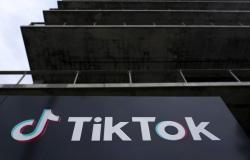We were on the brink of a planetary disaster and didn’t realize it. It couldn’t be otherwise, given that everything took place in space and precisely inlow Earth orbit. This is an area between the atmosphere and the van Allen belts, with an altitude between 300 and 1,000 km, which has now become almost an extension of our planet. It is precisely the low Earth orbit that hosts a large number of satelliteswhich guarantee many services that have become essential, such as positioning and tracking but also internet connections.
And it is especially in this last field that, with the apprehension of NASA, continue to multiply. Precisely the large number of satellites contributed to the danger, as a disaster was narrowly avoided planetary accident which could not only have compromised many services and infrastructure fundamental, but also several human lives. It is therefore on this problem of overcrowding, together with the renewal of the technical characteristics of the satellites, that NASA intends to concentrate its efforts to avoid possible disasters.
What happened
Pam Melroy, former astronaut and deputy administrator of NASA since 2021, announced that on February 28, 2024, a collision between two satellites was narrowly avoided which could have had terrible consequences, even turning into a real planetary disaster. In particular, the Russian satellite Cosmos 221 adrift was about to collide with the NASA Times satellite.
Neither of the two infrastructures is manoeuvrable, so when the distance between them decreased significantly there were moments of panic. In particular, from what was learned from Pam Melroy’s speech at the “Space Foundation’s Space” Symposium, the distance between the two satellites it arrived at less than 10 meters.
The collision would have caused a large amount of tiny debris (smaller than the eraser at the base of pencils, as defined by Melroy herself) that traveling at over 10,000 miles per hour (more than 16,000 kilometers per hour) could have damaged many other space infrastructures and potentially put many human lives at risk.
In detail, the Kessler syndrome, enunciated in 1978 by the NASA engineer of the same name. In a very simple way, this theory considers that the collisions between orbiting objectsdepending on their density, can trigger a chain reaction capable of hitting many space infrastructures. So, the risk of a sort of communications blackout and other essential satellite-based services.
NASA’s space sustainability strategy
By pure chance the accident was avoided, a situation that experts attributed to two main problems: the overcrowding of low Earth orbit and the impossibility of maneuver satellites, so much so that NASA has invited all space agencies to intervene to encourage the international control of infrastructures And free up space.
It is therefore essential, according to the recently announced spatial sustainability strategy, to focus on monitoring and the management of satellites, eliminating the non-functioning ones and space waste. In addition to NASA, many companies are addressing the problem, but the effort may prove insufficient.
At the moment, in fact, beyond 10,000 satellites crowding low orbit – four times as many as in 2019 – and about others 400,000 are close to launch. According to experts it is necessary to immediately set a limit, before the space traffic is completely unmanageable.
“A monumental problem”, half due to Elon Musk. The entrepreneur and SpaceX in fact hold the half of the satellites into orbit, for the sole purpose of profit, and intend to launch another 42,000. But there are still many entities about to invade low orbit, including Boeing, Starlink and Astra Space. Immediate intervention is therefore urgently needed, in addition to the greater safety of the satellites that will be launched maneuverable.
Tags: brink planetary disaster didnt realize





